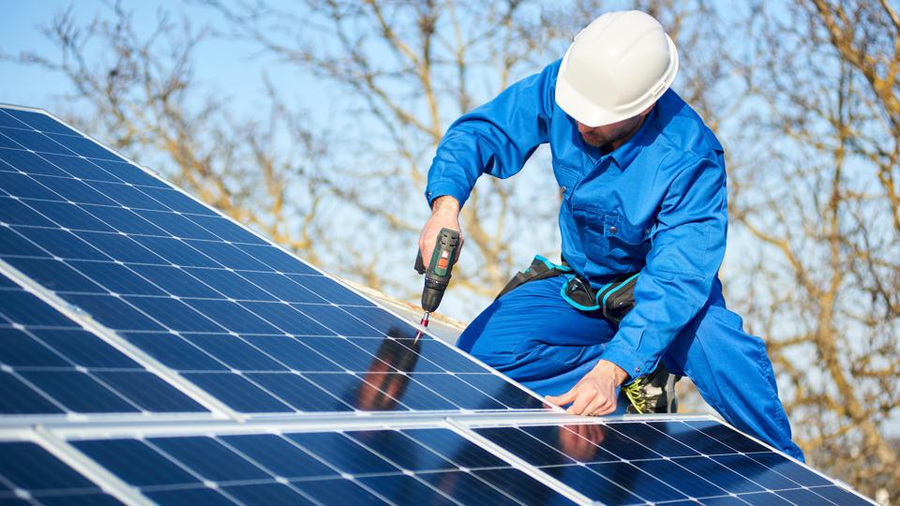Welcome to our comprehensive guide on installing solar panels at home. As renewable energy sources become more essential, many homeowners are turning to solar energy to reduce their carbon footprint and electricity bills. This blog post will walk you through the basics of solar panel installation, help you understand the costs involved, identify the best location for installation, and provide insights into maintaining your solar system.
Solar power not only supports environmental sustainability but also offers long-term financial benefits. Whether you’re looking to completely transition to solar energy or simply wanting to supplement your current electricity usage, understanding the essentials of installing solar panels is key. Let’s explore how you can harness the sun’s power effectively at home.

Contents
Understanding Solar Panel Costs and Benefits
The initial step in planning for solar panels is understanding their cost and potential savings. Solar installations can vary widely in price depending on the size of your setup and your geographic location. To get a rough idea of what you might spend and save, check detailed estimates at https://marketbusinessnews.com/how-much-does-solar-cost-for-your-home/386558/. Generally, upfront costs are counterbalanced by substantial reductions in monthly energy bills and access to government incentives, making solar a worthwhile investment over time.
Moreover, increased property value is another significant benefit. Homes equipped with solar panels often attract higher resale values. This boost in property value coupled with the potential to generate your own power essentially pays off the initial investment, proving that going solar is both economically and environmentally prudent.
Choosing the Right Type of Solar Panels
Not all solar panels are created equal. It’s vital to choose the type that best fits your roof’s architectural style and your region’s climate conditions. Monocrystalline panels, known for their efficiency and sleek design, are ideal for homes with limited roof space, whereas polycrystalline panels can be more cost-effective and are distinguishable by their blue hue. Thin-film solar panels offer versatility and a lower profile but generally require more space and yield less power output.
Each type has its pros and cons regarding efficiency, appearance, installation requirements, and cost. It’s crucial to do detailed research or consult with a professional to decide which type best meets your energy needs and aesthetic preferences.
Assessing Your Home’s Solar Potential
Before investing in solar technology, you must evaluate your home’s suitability for solar panel installation. Key considerations include roof condition, orientation towards the sun (south-facing is ideal in the Northern Hemisphere), possible shading from trees or other structures, and local climate conditions. Online tools such as Google’s Project Sunroof can provide insights into potential solar energy production based on your address.
If your home isn’t suitable for rooftop panels due to structural issues or shading, ground-mounted systems or community solar gardens may be viable alternatives. These options allow for flexibility in placement and orientation, maximizing sunlight exposure.
Installation Process and Legal Considerations
The actual installation of solar panels typically involves several steps: site assessment, obtaining permits from local authorities, physical installation of panels by certified technicians, and connection to the electrical grid. It’s important that you hire reputable contractors who adhere strictly to local building codes and regulations to ensure safe and effective installation.
Additionally, understanding local zoning laws, building codes, and solar rights laws is crucial to avoid legal hurdles. Some regions may also require you engage an electrician independently to handle wiring tasks or connect systems to public utilities.
Maintenance and Monitoring
Post-installation, regular maintenance is vital in maximizing the efficiency of your solar panels. Thankfully, solar technology requires minimal maintenance. Regular cleaning to remove dust and debris along with annual inspections should keep everything functioning optimally. Most systems come equipped with monitoring software that enables homeowners to observe their system’s performance continuously.
It’s also necessary to plan financially for eventual end-of-life recycling or replacement of components which ensures that even as your system ages, it remains as efficient as intended without undue environmental impact.
In conclusion, while the process may seem daunting at first glance, installing home solar panels can be streamlined with proper guidance and expertise. With this how-to guide, we hope you feel more prepared to take initiatives towards sustainable living while enjoying financial perks associated with becoming less reliant on mainstream power grids. As you embark on this exciting venture of adopting renewable energy technology at home, always remember that each small step contributes significantly towards a healthier planet.
To dive deeper into topics related to home-based renewable energy solutions or for professional consultation regarding solar setups specific for your residence needs—make sure to continuously follow our upcoming posts!








